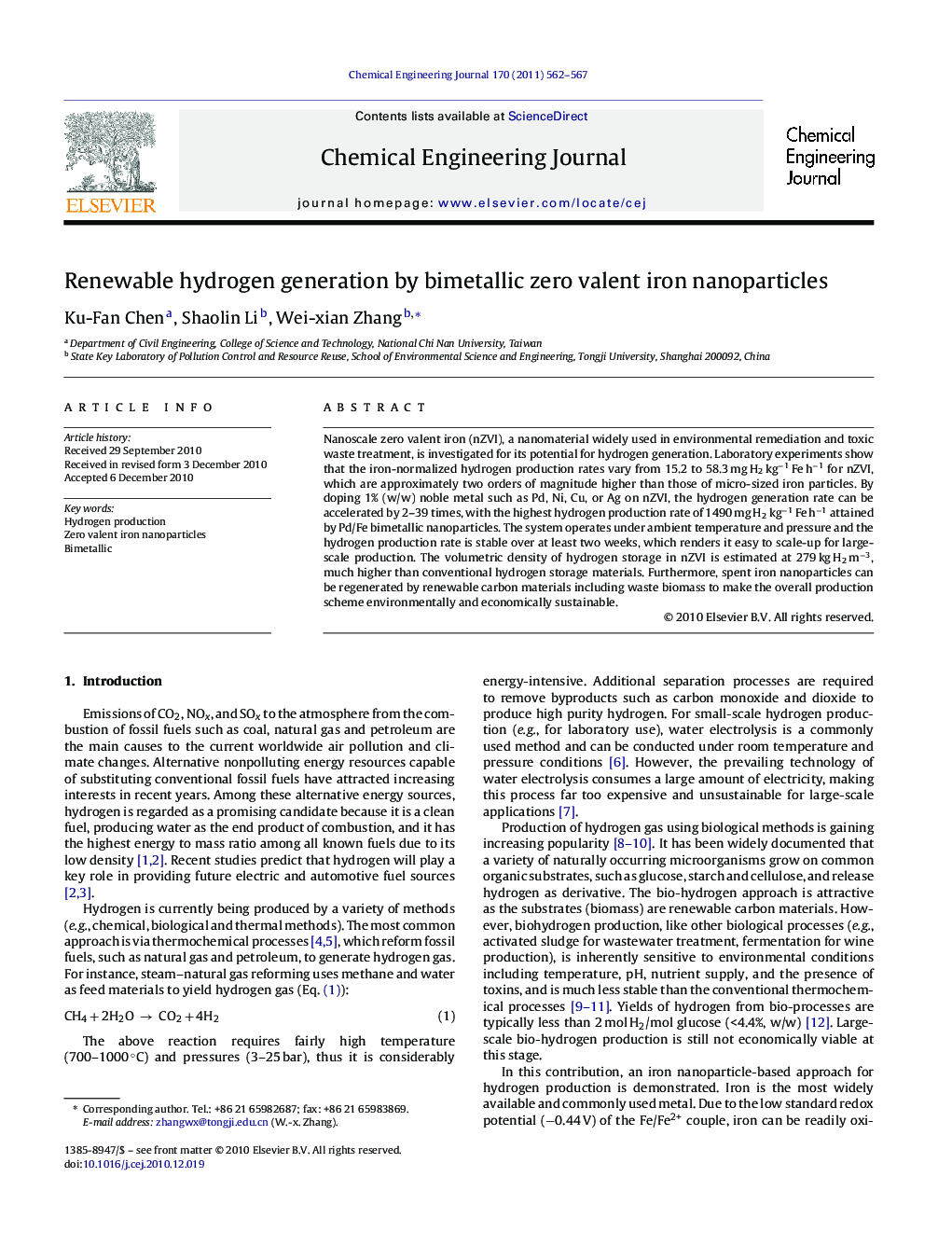| Article ID | Journal | Published Year | Pages | File Type |
|---|---|---|---|---|
| 151146 | Chemical Engineering Journal | 2011 | 6 Pages |
Nanoscale zero valent iron (nZVI), a nanomaterial widely used in environmental remediation and toxic waste treatment, is investigated for its potential for hydrogen generation. Laboratory experiments show that the iron-normalized hydrogen production rates vary from 15.2 to 58.3 mg H2 kg−1 Fe h−1 for nZVI, which are approximately two orders of magnitude higher than those of micro-sized iron particles. By doping 1% (w/w) noble metal such as Pd, Ni, Cu, or Ag on nZVI, the hydrogen generation rate can be accelerated by 2–39 times, with the highest hydrogen production rate of 1490 mg H2 kg−1 Fe h−1 attained by Pd/Fe bimetallic nanoparticles. The system operates under ambient temperature and pressure and the hydrogen production rate is stable over at least two weeks, which renders it easy to scale-up for large-scale production. The volumetric density of hydrogen storage in nZVI is estimated at 279 kg H2 m−3, much higher than conventional hydrogen storage materials. Furthermore, spent iron nanoparticles can be regenerated by renewable carbon materials including waste biomass to make the overall production scheme environmentally and economically sustainable.
